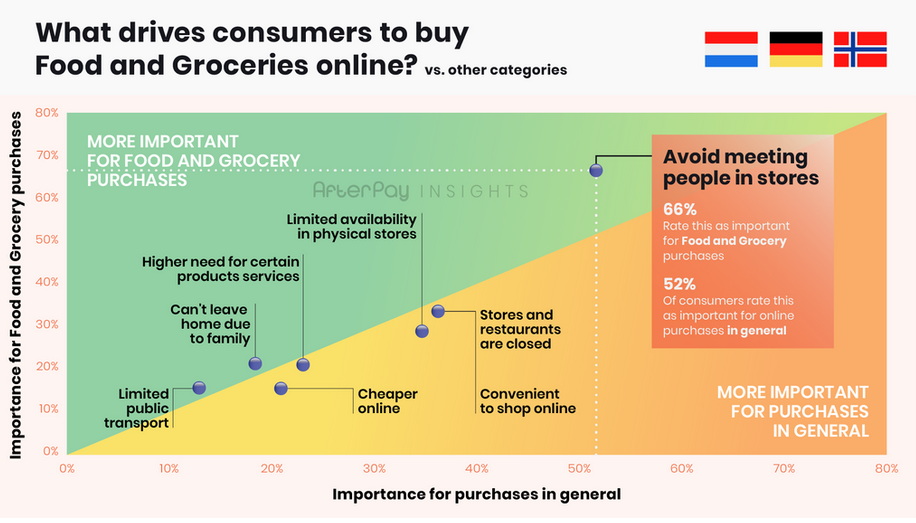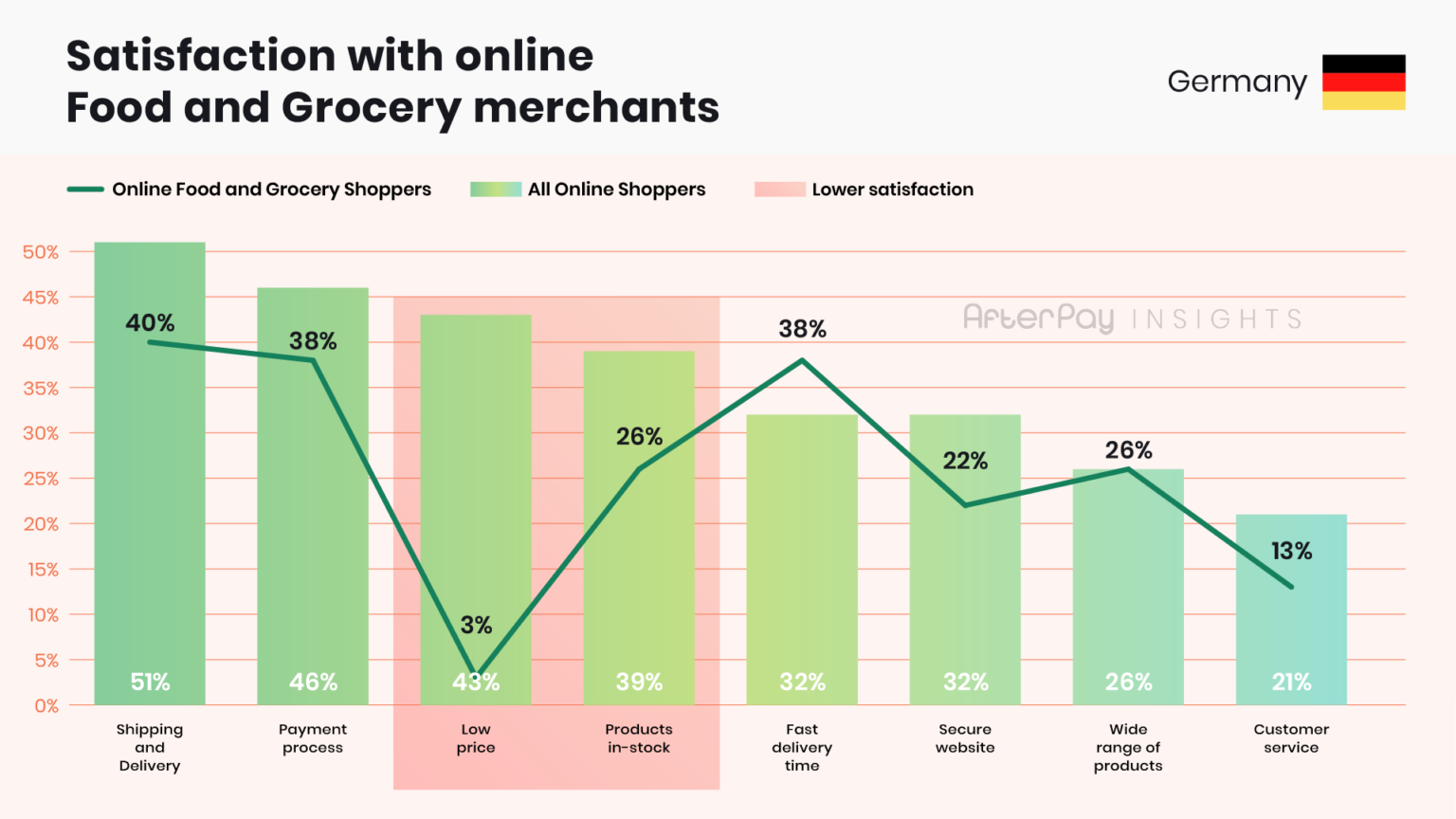
Where are your customers going? They’re online. The why is obvious at least.
Of all industries, Consumer-Packaged Goods (CPG) stands at an opportune turning point in mid-2020. Some retailers are hurting; others have never seen anything close to this level of growth. In the following article, we will analyze the business environment using recent surveys of European consumers and deliver practical advice to help retailers respond to current issues to gain trust, satisfy emerging demands, and grow.
As my usual readers know, Customer Experience (CX) runs deeper than service. But in this case, there is a hidden but critical element to the perception of a retail brand: the products that are delivered to your home, or organization. Procurement and supply chain (engine) are a major barometer for overall brand health and experience perception. Would you feel more protected if you knew how suppliers have adapted to the pandemic? Your customers would too.
Procurement in many ways is responsible for our wellbeing. COVID-19 has radically shifted customer behaviour toward online purchases, and companies need a faster pathway toward digital transformation. Take grocery stores as an example. A recent survey of customers in Germany, The Netherlands, and Norway found that safety and health concerns are now the primary motivator to buy groceries online. Let’s recall that only a few months ago, Germany was moving in what-looked-like-slow-motion toward digital transformation and eCommerce adoption. China, South Korea, India, Australia, UK, USA, and Spain were years ahead. Recent data, however, suggests significant changes. Even small shops offering relatively poor eCommerce solutions are investing in digital platforms now to capture demand and sales.
Though the virus is instigator, the lack of safety in stores here in Europe is equally important in pushing customers into the unknown Internet to search for food. However, food and grocery’s shortfalls are impacting all retailers. The same study indicated a possible correlation between grocery buying behavior and increases in all online purchases; that is, consumers who did purchase groceries online have also increased their total online purchases since the outbreak in March in other several areas due to the simplicity and convenience of the experience. What I call as a Type I diabetic, stress free experience. In the graph bellow you can see as the European perceive better experiences from online platforms besides amazon, and companies raise their ability to delivery, the online purchase behaviour will growth and grow continuously now and the day after.
Figure 2

The trend remains in its “formative” weeks, but the connection is simple. For the same reason that consumers buy prescriptions and perfume at the same drugstore, online purchases in one area drive purchases in others. Thus, we can assert with some confidence that the pandemic, combined with ineffective attempts to convey health safety to consumers, is changing consumer behavior on a massive scale; it is also leaving a permanent mark on what consumers expect to find and purchase online.
However, nothing will be permanent unless online shopping experiences prove their mettle. If your supermarket or pharmacy has a great experience, customers will expect a similar level of experience online. Some good examples here in Europe are DM, a convenience store chain, and Douglas. These have both positioned online offerings well in the last couple of years. So the pandemic has actually blown wind into their sails. Most CPGs were not as prescient, or “lucky”.
Here are a few actions these businesses can take to address the pandemic across physical and digital sales channels.
“Your worst-case scenario is to know that in your store, due to lack of well-defined customer and employees’ experience protective procedures, people got sick or infected. Care about humans now, they will care about you after that.”
Retain in-store purchases by taking adequate precautions and interventions to prioritize employee safety. Provide all necessary instructions and trainings to avoid health and safety risks for them and your customers in their interactions with your brand.
1) Protect employees with shields, safety procedures to their protection;
2) Provide customers with hand-sanitizers and special instructions to keep the space safe (Ie. Mask requirement, 10 people in, 10 people out… avoid crowds at any price). Further reading: Act boldly to protect customers, employees and partners.
Design an incredible e-Commerce system that will be deliver a superior digital experience in alignment with physical presence. Be sure to announce your initiative to help reduce crowds and improve social distancing at your physical locations.
Personalize the experience, and be sure to maintain brand integrity. You can learn a lot from Amazon, but don’t emulate them. Amazon is as unique as you are, so learn from them, but do your own thing. Customers will appreciate your progress and personality.
Keep your experiences consistent and aligned with the experience in-store. There are reasons people come to your stores. Use the same human magic online.
Make sure your delivery partners/service also focuses on employee and customer safety and protection. DHL provides a great example of a service totally adapted for their employees and customers concerns around the globe.
Use this momentary need to adapt as a motivator to simplify complexities, drive efficiencies, enhance safety and jumpstart real innovations for your customers, focusing on how to drive adoption, retain customers, employees, and satisfaction.
Revise logistics across online and in-shop experiences. People want to know how secure they will be while receiving products at home. Use instructions communicating how to open packages safely — on your website and packaging. This will show clearly that you are not just using buzz words but delivering on your brand promise to keep humans safe.
If you have no regulation or guidance from your government regarding how to design your retail store experience, make sure to design and test all in-store journeys. Your goal is to deliver a secure experience if customers cannot purchase online. Give them the right reasons to trust your organization instead of your competitors.
What you do during the pandemic, and what you don’t will impact your brand perception now and in the future. This traumatic experience will stay with us longer than any years in recent memory. Remember: Sales are important, but lives are key. So, focus on maintaining life.
How CPGs can satisfy online customers in July 2020 to steal online markets
No matter how your business chooses to address the pandemic, delivering streamlined in-store and digital experiences from procurement through consumption is not easy right now. If you are like many Consumer-Packaged Goods (CPGs) stores that are struggling to adjust digitally and physically, then it can be a challenge just to understand how to satisfy online customers. That’s what the rest of this article will detail.
We can see customer dissatisfaction in three connected arenas: low prices, in-stock products, customer service and whether stores carry the products consumers are looking for.
Observe the graph below showing the most unsatisfied points of interest:
Figure 3

Price: In mid-July, German and other European governments announced extensive tax benefits for retailers. Several businesses have already updated their prices to the advantage of consumers. Additionally businesses can achieve greater efficiencies by optimizing portfolios and simplifying processes. (See Complexity below)
Customer service: A small complementary part of the overarching customer experience in Europe in general and especially in the DACH region, customer service has been the object of scorn for years. Empathy is still far from the needed level around Europe and DACH region. But slowly companies are improving. Develop feedback channels, listen, and address concerns with impactful solutions for customers afflictions.
Security and payments: Europeans care a lot about their privacy, as well as who stores their sensitive information. Online platforms are improving; several companies are shifting to digital cloud based solutions (eCommerce), but even the most robust solutions have yet to gain customer confidence. Prioritizing security now will win trust, and more business.
Complexity: Although these challenges seem quite different and dependent upon technology, they are made more difficult by an unspoken adversary: complexity. One common problem now is the multiplication of Stock-Keeping-Units (SKUs). Giving shoppers a long list of choices does address an important customer need, but it can quickly result in an immense array of inputs needed to source products. These quickly become very difficult to manage, creating challenges around planning, out-of-stock and overhead. McKinsey recently agreed with this synopsis (“Harnessing the power of simplicity in a complex consumer-product environment”, 2020). High prices are a natural result of complexity. Inefficiencies and slow rate of change are symptoms.
This article was initially posted at Eglobalis.
Thank for reading! As always please leave your comments, feedback and any questions for follow-up below.
Stay safe whatever you are!



![[Research Round-Up] New Study Shows the Continuing Value of B2B Thought Leadership](https://customerthink.com/wp-content/uploads/development-2010010_1280-pixabay-innovation-ideas-think-1-218x150.jpg)
Hello! Very interesting article, thanks for sharing such good information. With the outbreak of the pandemic, we were forced to switch to online shopping, but I can say that most of those buyers who were forced to switch to online shopping are and will buy online after the end of the pandemic. This area is now very popular and you need to catch the wave in time and get your share of success. I’ll use your hints, thanks!
Hi Relizen, Thanks for your thoughts, and I agree with you. What they are founding here in Europe and in almost everywhere, people are buying more online and also they are starting to acquire online products that often they have to visit the supermarkets to find or buy. For Europe is hard to ”get change”, but they have no other option. Therefore the digital transformation is somehow 🙂 happening by lack of other safe options. The European industry, in general, was reluctant to adopt digital transformation, especially small businesses. Now all companies are running to find the best e-commerce and cloud-based platforms due to the urgency. Covid19 impact is terrible for all but at least people are quickly adapting and adopting different options and changing. Stay safe and thanks again Ricardo